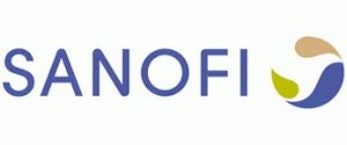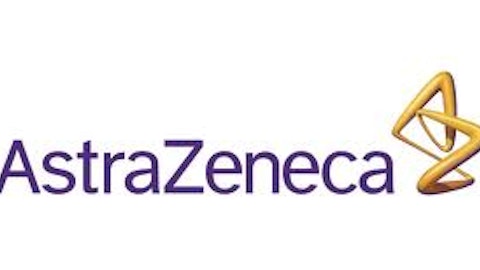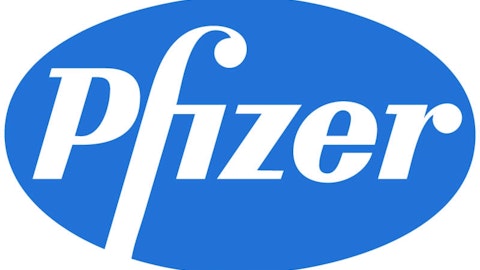It’s estimated that 30% to 40% of adults in the world experience some degree of insomnia every year. Most of these cases aren’t chronic and do not require medication. However, 10% to 15% of American adults reportedly suffer from chronic insomnia, which lasts for months at a time. Anxiety and depression are frequent causes of chronic insomnia, and currently available insomnia medications often contain some similar ingredients as anti–depressants.
Although many popular insomnia treatments lost their patent protection over the past decade, major companies are still rolling out new treatments, which they claim have fewer side effects. Let’s take a look at the current state of the insomnia market to better understand how these medications work, and if these products have the potential to become blockbuster drugs.
Sleep War Z

Ambien (zolpidem) is chemically different from older sleep aids, which often contain benzodiazepine – a psychoactive drug that is used to relax muscles and reduce anxiety. Ambien binds to GABA receptors to relax the muscles. Ambien’s popularity surged in the 1990s, and was Sanofi SA (ADR) (NYSE:SNY) blockbuster drug for many years. Sanofi SA (ADR) (NYSE:SNY)’s U.S. patent for Ambien expired in April 2007, and 13 generic versions have since been approved by the FDA.
Generic Ambien is now available from a wide variety of manufacturers, such as Sandoz, Teva and Ratiopharm. Sanofi-Aventis continues producing Ambien CR, an extended, modified-release version of the original medication, which reportedly helps maintain slumber, while the original Ambien and its generic copies only help initiate sleep.
Lunesta (eszopiclone), which was created by Sepracor (now known as Sunovion), is similar to Ambien since it is also a non-benzodiazepine treatment that initiates sleep by targeting GABA receptors. The patent for Lunesta will expire in February 2014, and is expected to be widely copied by generic manufacturers.
Sonata (zaleplon) also works in a similar manner to Lunesta and Ambien, and was originally produced by King Pharmaceuticals, which was later acquired by Pfizer for $3.6 billion. Sonata’s patent expired in June 2008, and has since been made widely available by generic competitors.
Getting the circadian rhythm back
Rozerem, or Ramelteon, is produced by Takeda Pharmaceuticals, and works by binding to melatonin receptors, which maintain the body’s circadian rhythm. This alternative approach causes less dependence and potential for abuse. Rozerem’s patent has been extended to 2019, although companies like Watson Pharmaceuticals (now known as Actavis) have attempted to produce generic versions before.
Another company focused on regulating the body’s circadian rhythm through melatonin receptors is Vanda Pharmaceuticals Inc. (NASDAQ:VNDA). Vanda Pharmaceuticals Inc. (NASDAQ:VNDA) is producing a treatment for Non-24 disorder, which is considered a neurological disorder that is different from typical chronic insomnia. Non-24 extends a patient’s circadian rhythm, causing the body to be disconnected from external time cues, resulting in chronic insomnia and excessive daytime fatigue. It usually affects the blind, since the lack of visual cues substantially exacerbates the disorder.
Vanda Pharmaceuticals Inc. (NASDAQ:VNDA)’s treatment, tasimelteon, aims to master the body clock by stabilizing both melatonin and cortisol rhythms, which oversee the circadian rhythm. Vanda’s new-drug application for tasimelteon was recently accepted by the FDA, and given a priority (eight month) review status. The FDA’s actions indicate that tasimelteon addresses an unmet need in the market, and is different from typical insomnia drugs.
After the FDA move, shares of Vanda Pharmaceuticals Inc. (NASDAQ:VNDA) surged 44% on July 30. However, Vanda is currently unprofitable, and its only other approved drug is its schizophrenia treatment Fanapt, so investors should consider the stock a very speculative one.
Turning off the brain at the source
Vanda Pharmaceuticals Inc. (NASDAQ:VNDA)’s success is a stark contrast to pharma giant Merck & Co., Inc. (NYSE:MRK), which hit a roadblock in early July after the company’s insomnia drug, suvorexant, was found to only be safe in lower doses. Suvorexant is part of a new class of insomnia treatments known as orexin receptor antagonists, which block the neurotransmitters in the brain that keep a person awake. This is a stark contrast to the targeting of GABA and melatonin receptors that other insomnia drugs usually use – suvorexant turns off wakefulness rather than inducing sleep.
Merck & Co., Inc. (NYSE:MRK) originally proposed that elderly patients start with 15 mg doses, upping the dosage to 30 mg if necessary, while non-elderly adults should start at 20 mg and increase it to 40 mg if needed. However, the FDA determined that doses between 30 to 40 mg were unsafe for approval, although a starting dose of 10 mg with an upper limit of 15 to 20 mg would be safe. The FDA decision severely limits Merck & Co., Inc. (NYSE:MRK)’s intended use of the drug, and has forced the company to go back to the drawing board to release a lower dosage version instead.
Although that setback was disappointing, it won’t hurt Merck & Co., Inc. (NYSE:MRK) too much in the long run. ISI Group analyst Mark Schoenebaum estimates that a one-year delay for suvorexant will only impact the company’s fiscal 2018 estimate by 0.25% to 0.60%.
The Foolish Bottom Line
Treatments for chronic insomnia will always be in high demand. Whether it’s mainstream “Z-drugs”, circadian rhythm treatments, or new treatments that block neurotransmitters, there’s always a new development to follow in this highly competitive market.
For now, the main treatment to follow is Vanda’s tasimelteon, which will face no competition whatsoever if it is approved. Investors should also keep an eye on Lunesta’s upcoming patent expiration, which could boost the revenue of generic drug manufacturers looking to get their hands on a new Z-drug for insomnia. As long as people prefer these more potent sleep aids over a glass of warm milk, the insomnia industry will continue to thrive, and biotech investors should stay on top of these developments.
Leo Sun has no position in any stocks mentioned. The Motley Fool has no position in any of the stocks mentioned.
The article Sleep War Z: A Written History of the Insomniac War originally appeared on Fool.com and is written by Leo Sun.
Leo is a member of The Motley Fool Blog Network — entries represent the personal opinion of the blogger and are not formally edited.
Copyright © 1995 – 2013 The Motley Fool, LLC. All rights reserved. The Motley Fool has a disclosure policy.



